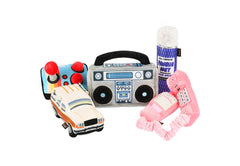As warmer weather approaches, it is time to begin protecting your pet from fleas and ticks. Taking a proactive approach to keeping them safe prior to flea and tick season is critical to ensuring you don’t face infestations once the season is in full swing. There are many ways to prepare to keep these pests at bay so you and your pet may enjoy the season.
Understanding the Dangers
Other than being a nuisance and causing itching, it’s important to understand why fleas and ticks are so dangerous to your furbaby. They often carry and spread a variety of diseases that may make your pet ill. Following are the most common diseases caused and spread by fleas and ticks, most of which may result in extreme sickness or even death.
Lyme Disease
This is the most common of illnesses and is spread through the bite of an infected deer tick. Symptoms of Lyme disease in dogs include lameness, fever, lethargy, lack of appetite, swollen lymph nodes, and joint pain. All it takes is for your pet to get bitten by just one tick carrying Lyme disease to pass it onto your dog or cat.
Rocky Mountain Spotted Fever (RMSF)
Rocky Mountain spotted fever is caused by the bacteria Rickettsia rickettsii and is spread by dog ticks, wood ticks, and lone star ticks. Symptoms of Rocky Mountain spotted fever include fever, loss of appetite, joint pain, vomiting, diarrhea, and rash.
Ehrlichiosis
Ehrlichiosis is another tick-borne illness seen in dogs caused by the bacterium Ehrliichia canis. This disease can cause anemia, joint pain, coughing, and lethargy.
Anaplasmosis
Anaplasmosis is a tick-borne illness caused by the bacterium Anaplasma phagocytophilum. Symptoms of this disease include fever, lethargy, loss of appetite, and vomiting.
Cat Scratch Disease
Bartonella henselae are bacteria usually spread through fleas and can cause skin infections in cats. The most common symptom is ulcerated lesions or sores on the skin. These bacteria are transmittable from felines to humans via a scratch contaminated with flea stool.
Preparing for Flea & Tick Season
Prevention is key in keeping your animal safe during spring, summer and fall, when fleas and ticks are most active. While there are many treatments on the market, keep in mind that none are 100 percent effective.
Vaccines
When it comes to protecting your pet from fleas and ticks during the warmer months, it is important to make sure they have the necessary vaccinations and medications. Most likely, your vet will recommend a treatment to protect your pet from a combination of fleas, ticks, and heartworm.
Treatments
There are many different types of flea and tick treatments available on the market. Keep in mind, most contain pesticides. For example, spot-on treatments typically contain permethrin, which is a synthetic chemical insecticide designed to spread from the back of the neck where the treatment gets administered, throughout the pet’s skin surface until the entire body is covered. The type of treatment you use will depend on the size and age of your pet, and how prevalent pests are where you live. Here is a list of pesticidal-type of treatments:
- Spot-on applications
- Collars
- Chewables
- Shampoos
- Sprays
- Dips
- Powders
Chemical Insecticidal Repelling Shampoos and Sprays
Flea and tick repellants are an essential part of pet care during flea and tick season. Shampoos and sprays containing pesticides may help provide your pet with immediate protection against pests. It is important to use a shampoo or spray that is specifically formulated for use on either a cat or dog since products are designed to work on different kinds of animals. Some products may be used on both. When applying the flea spray, make sure to follow the instructions on the label carefully. It is also important to take extra precautions when spraying around children or other family members, as some flea sprays may be dangerous if ingested or inhaled. Make sure that everyone is in a safe location when spraying and that any residual spray is cleaned up immediately.
Natural Repelling Shampoos and Sprays
Most veterinarians are not familiar with natural products, as this is not part of their training. However, organic flea and tick treatments are becoming increasingly popular because they don’t present safety concerns for pets, children, and other household members. What also is attractive about natural repellents is many are equally as effective as their chemical-pesticide opposites.
Natural and organic shampoos and sprays that are highly effective without the use of chemicals or pesticides.
Repelling formulations that are 100% natural may include such plants and minerals as rosemary, ginger, witch hazel, ginger, apple cider vinegar, jojoba, lavender, aloe vera, black pepper, and colloidal silver. Essential oils also are highly effective repellents but should never be used directly and only present a fraction of a formulation. PawPurity’s top essential oil picks are cedarwood, rosemary, and lemongrass.
Infestations are particularly hard on senior dogs and cats that already need special care because the only way to get rid of pests at this advanced stage is by using insecticides. With an already-weakened immune system, it’s wisest to do due diligence in repelling fleas and ticks rather than treating infestations.
Grooming: Frequent Brushing & Bathing
Brushing your pet's coat on a regular basis is essential in keeping fleas and ticks at bay. This will help remove loose hair and debris. Regular brushing allows you to keep an eye out for any changes in your pet’s skin or coat, which could be an early sign of a flea or tick infestation. Look for small dark spots, which could indicate flea droppings or the pests themselves. If your pet is scratching excessively or biting itself, this could be a sign of a flea or tick infestation.
Keeping your pet bathed is important and allows you to spot and address fleas and ticks. A warm bath using a good repelling shampoo cleans your pet while removing existing adult fleas and ticks. After bathing, thoroughly dry your pet’s coat and skin with a clean towel. This step is important for keeping moisture away from fleas and ticks, which can lead to them seeking shelter elsewhere on your furbaby.
Education: Understand Habitat & Behavior
Fleas and ticks are parasites that thrive in humid, damp environments and long grasses. To protect your pet from these pests, it’s important to understand their habitats and behaviors so you may identify possible areas where these critters are most present. Fleas and ticks tend to congregate in warm, humid areas. They like to hide in grassy areas or shaded spots waiting for a host. Remember too that ticks can survive for weeks without feeding even in winter. They are always present, looking for a warm animal to latch onto. If you find any ticks on your pet, remove them immediately using tweezers. Ticks can spread diseases, so time is of the essence. To protect your pet during walks and outdoor play, a safe repellent spray before going out works wonders.
Exercise: Create Outdoor Barriers
Exercising outdoors can put your pet at risk of picking up fleas and ticks. Creating outdoor barriers can help keep your pet safe while still allowing them to get their daily dose of physical activity.
- First, check your yard for areas where fleas and ticks may be hiding, such as tall grass, overgrown bushes, and shady spots. Trim back any foliage to reduce potential hiding spots.
- Regularly mow your lawn to keep it short and on the dry side, which helps prevent fleas and ticks from taking up residence.
- Use yard repellants to help keep pests away from your pet while they exercise outside. Diatomaceous earth is a natural repellent that is safe for both people and pets and can provide an extra layer of protection against unwanted insects.
- Finally, make sure that you check your pet for fleas and ticks after every outdoor exercise session. Inspect its coat and skin thoroughly for any signs of fleas or ticks, and promptly remove any you find.
In conclusion, preparing your pet for flea and tick season requires a multi-faceted approach. Prevention, grooming, repellents, exercise, diet, and education are all important components of this process. It is essential to understand the various ways to protect your pet from pests and how to create a safe and healthy environment. Taking the time to ensure that your pet is properly protected and cared for can help you enjoy the warmer months with peace of mind.





